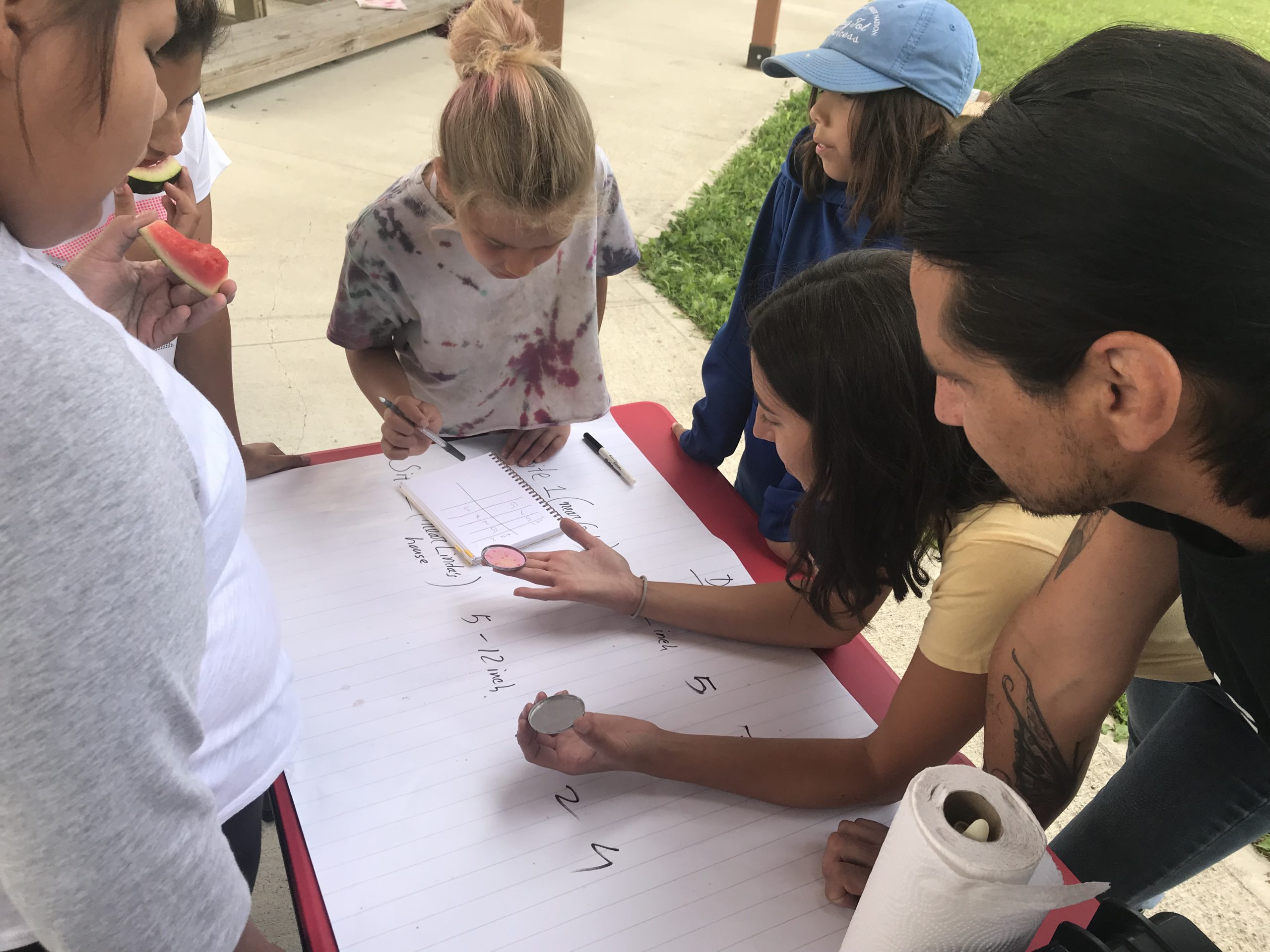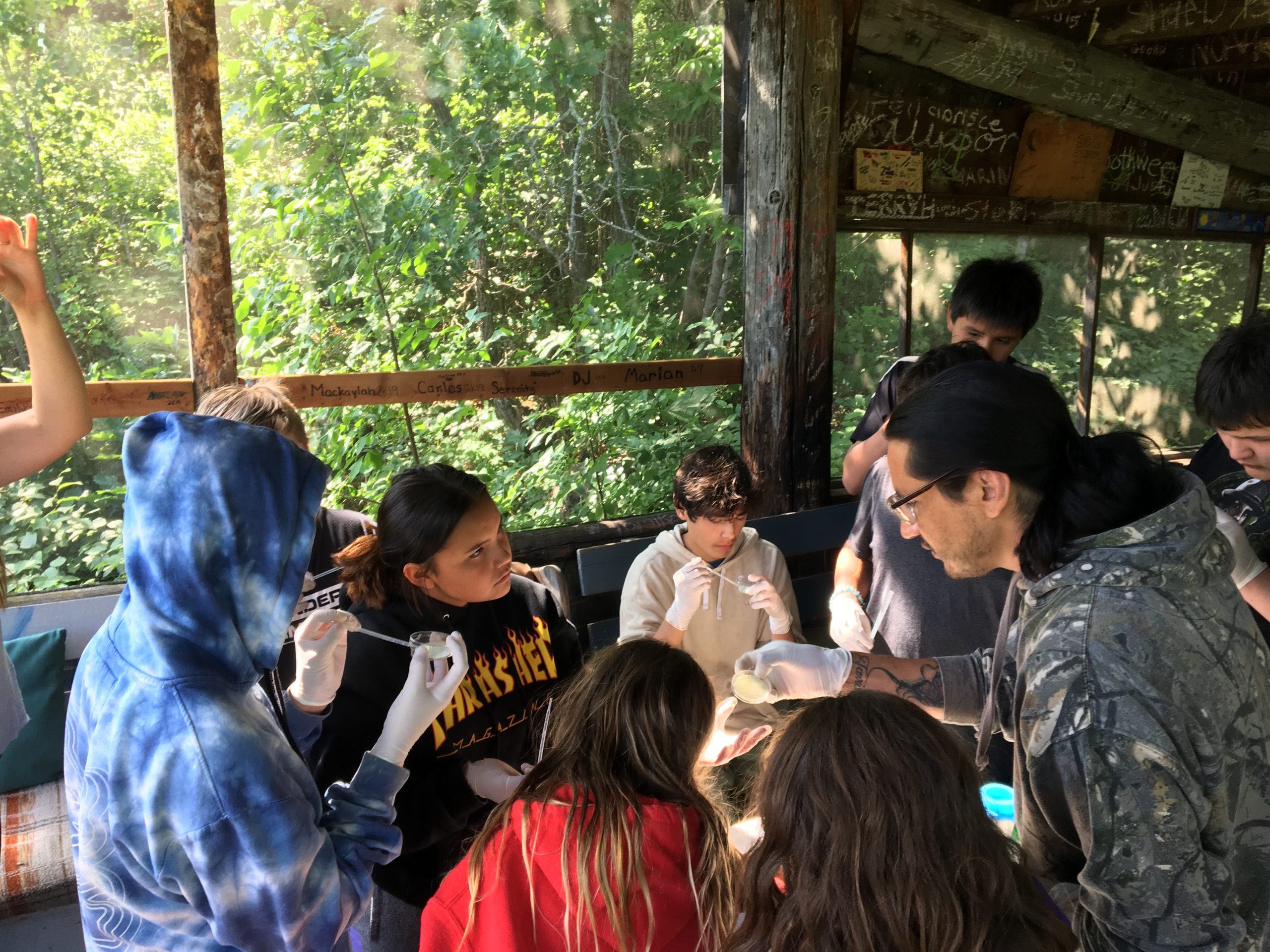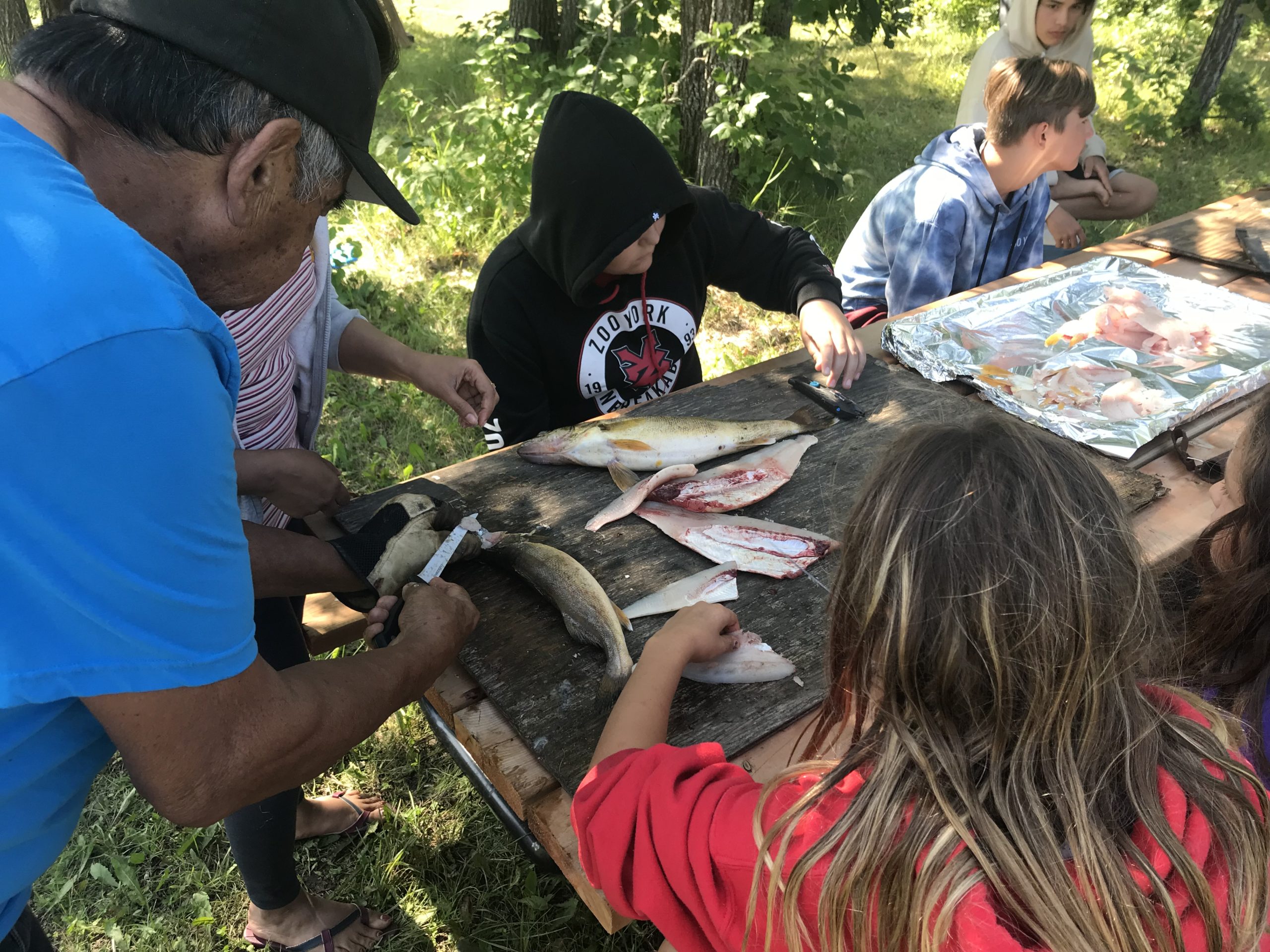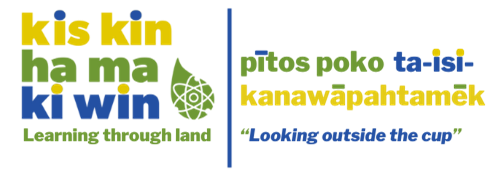Mission
Our mission is to provide Indigenous students and local youth in communities training and mentorship opportunities around environmental monitoring in a way that utilizes Western science, Indigenous science and local knowledge, and focuses on local community priorities.


Vision
Our vision is to explore and promote the role of interdisciplinary community-based monitoring by bridging Indigenous Science and Western Science through Indigenous-led, land-based Indigenous camps, workshops and internships.
"Efforts at building capacity in science are not only compatible with but are indeed reliant on efforts that simultaneously build capacity in traditional indigenous culture and language."

Values
Outreach and advocacy
“People from outside are always saying to us – ‘you need to think outside the box. Think outside the box.’ But we are people not of the box. We are people of the circle. You need to join the circle” (Robert Spence, Ithinew)
This project has emerged from close and sustained collaborations with Indigenous (First Nations and Métis) communities. It reflects local environmental and health concerns and has been shaped by local priorities. To better support communities, this work focuses on knowledge mobilization and outreach with Indigenous communities, organizations, decision-makers, industry and the public as a whole. In addition to working with Elders, knowledge keepers and leadership, our work emphasizes the importance of training, with local youth as well as Indigenous undergraduate, graduate and post-doc students.
Outreach activities include: encouraging Indigenous youth to enter university programs and mentoring women in undergraduate NSE programs to pursue graduate studies.
Two-eyed seeing
“To take a Two-Eyed Seeing approach, we first need something like patch therapy. Where covering a dominant eye gives the other eye a chance to heal. Similarly, we would cover Western sciences and give focused attention to Indigenous sciences. Over time, we may begin to see with the depth of both perspectives.” (Daniel Gladu Kanu, Anishinaabe/Metis)
This work is grounded in Etuaptmumk or “two-eyed seeing”, a concept developed by Elder Albert Marshall (Mi’kmaq) which explicitly asserts that both Western and Indigenous science are of key importance and should thus be included in all decision-making. Our approach is primarily shaped by Indigenous science and community priorities and that is consistent with data sovereignty. Our governance structure is also Indigenous-led and accomplished through an Advisory Council that is mainly Indigenous Indigenous and that welcomes the participation of Elders and knowledge keepers. Our work is holistic and interdisciplinary in nature, incorporating biophysical, social and economic, health and cultural approaches to environmental monitoring projects in a way that is Indigenous-led and community-controlled.
Training and mentorship
Our focus on the training and mentoring of Indigenous students and local youth in turn reflects the education focus of the TRC Calls to Action and a desire to support these students in ways that affirm both Indigenous science and Western science. Community youth will have opportunities to work with and to be mentored by older Indigenous students who are in turn mentored by Indigenous scholars.
This project will provide local youth with opportunities to engage in relevant experiential learning and to take advantage of postsecondary educational opportunities. Youth and other community members will be trained in a wide diversity of skills including research design, environment and health-related data collection, data analysis and knowledge exchange within and outside the community. Our strength and solutions-based focus on Indigenous-led monitoring will help address the longstanding and outsider-driven and science-based priorities when it comes to environmental management and the Indigenous-led environmental monitoring extraction of natural resources but doing so in a way that affirms the importance of the environment and the Aboriginal and treaty rights of impacted communities according to Section 35 of the Constitution Act.
Land Acknowledgment
The University of Manitoba is located on the traditional territories of the Anishinaabe, Cree (Innini/Ithine), Anishininew (Oji-Cree), and Dene Peoples and the homeland of the Red River Métis. We respect the Treaties and other agreements that were made on these territories. We acknowledge the injustice and harms of the past, many of which continue today. Many of these harms have also been and are still being perpetuated by postsecondary institutions across the country, including the University of Manitoba. However, we are committed to addressing such harms and injustice and moving forward in active partnership with Indigenous communities in a spirit of reconciliation and solidarity.
EDI – Equity, Diversity and Inclusion
EDI is especially important when it comes to recruiting and supporting Indigenous and international students. This is why EDI plays a fundamental role in all of my activities, which aim to support First Nations and Métis communities as they work for social and environmental justice. This takes the form of research, education and employability training, outreach, and advocacy with provincial, federal and international governments. This work is all relationship-based, many of which span decades However, communities are not homogenous, and so some of our work focuses on specific groups including emphases on gendered violence as associated with hydropower, support for Elders and safety as related to Covid and food security, and creating safe spaces for and mentoring local youth.

